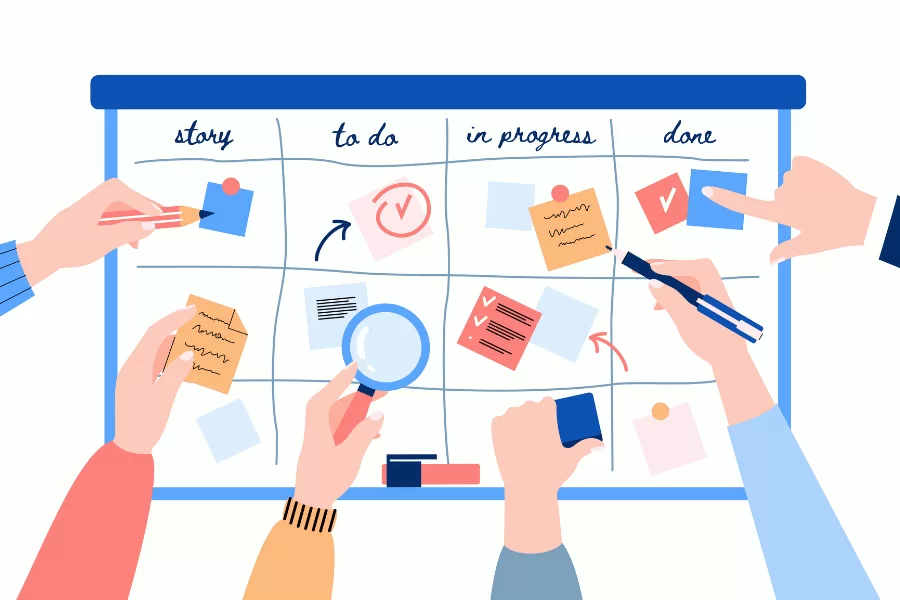Life Cycle Of Scrum Based On Agile Principle

- Practitioner
- November 8, 2021
- 10:01 am
- No Comments
As many of us are already well known for the word Scrum, there would be people too that have not been familiar with this word before so let’s start with its meaning. As SCRUM is a framework that helps out the teams to work together. It is an iterative and incremental approach of developing software that is purely based on the principles of agile. The philosophy of agile promotes project management which further promotes continuous modification and examination and guiding philosophy by using fellowship or team spirit, accountability, and self-organization. Scrum Masters are the leaders who truly serve the whole team. They are purely accountable for their scrum team’s whole effectiveness.
Agile is a widespread philosophy for the production of software and scrum is only an application of that ideology to build adaptive solutions to complex problems. Agile and Scrum are the same but at the same time are distinct as scrum is one way to apply agile on a short note of rules which explains a specific set but again agile is the whole concept under which whole guiding principles is described. They both are repetitious models but are largely different. Scrum can be seen as an agile framework for the development of software. Scrum does not tell what to do during the development of software but it lays down the relative outcomes but leaves it all to the scrum team to handle it as per their rationality.
Scrum Master serves differently to its members, product owner, and organization, and here is the detailed outlook on how Scrum Master serves differently to its different groups;
Scrum Master Service to the Product Owner
The Scrum Master serves the Product Owner in several ways, including:
- Ensuring that goals, scope, and product domain are understood by everyone on the Scrum Team as well as possible;
- Finding techniques for effective Product Backlog management;
- Helping the Scrum Team understand the need for clear and concise Product Backlog items;
- Understanding product planning in an empirical environment;
- Ensuring the Product Owner knows how to arrange the Product Backlog to maximize value;
- Understanding and practicing agility; and,
- Facilitating Scrum events as requested or needed.
Scrum Master Service to the Development Team
The Scrum Master serves the Development Team in several ways, including:
- Coaching the Development Team in self-organization and cross-functionality;
- Helping the Development Team to create high-value products;
- Removing impediments to the Development Team’s progress;
- Facilitating Scrum events as requested or needed; and,
- Coaching the Development Team in organizational environments in which Scrum is not yet fully adopted and understood.
Scrum Master Service to the Organization
The Scrum Master serves the organization in several ways, including:
- Leading and coaching the organization in its Scrum adoption;
- Planning Scrum implementations within the organization; Helping employees and stakeholders understand and enact Scrum and empirical product development;
- Causing change that increases the productivity of the Scrum Team; and,
- Working with other Scrum Masters to increase the effectiveness of the application of Scrum in the organization.

